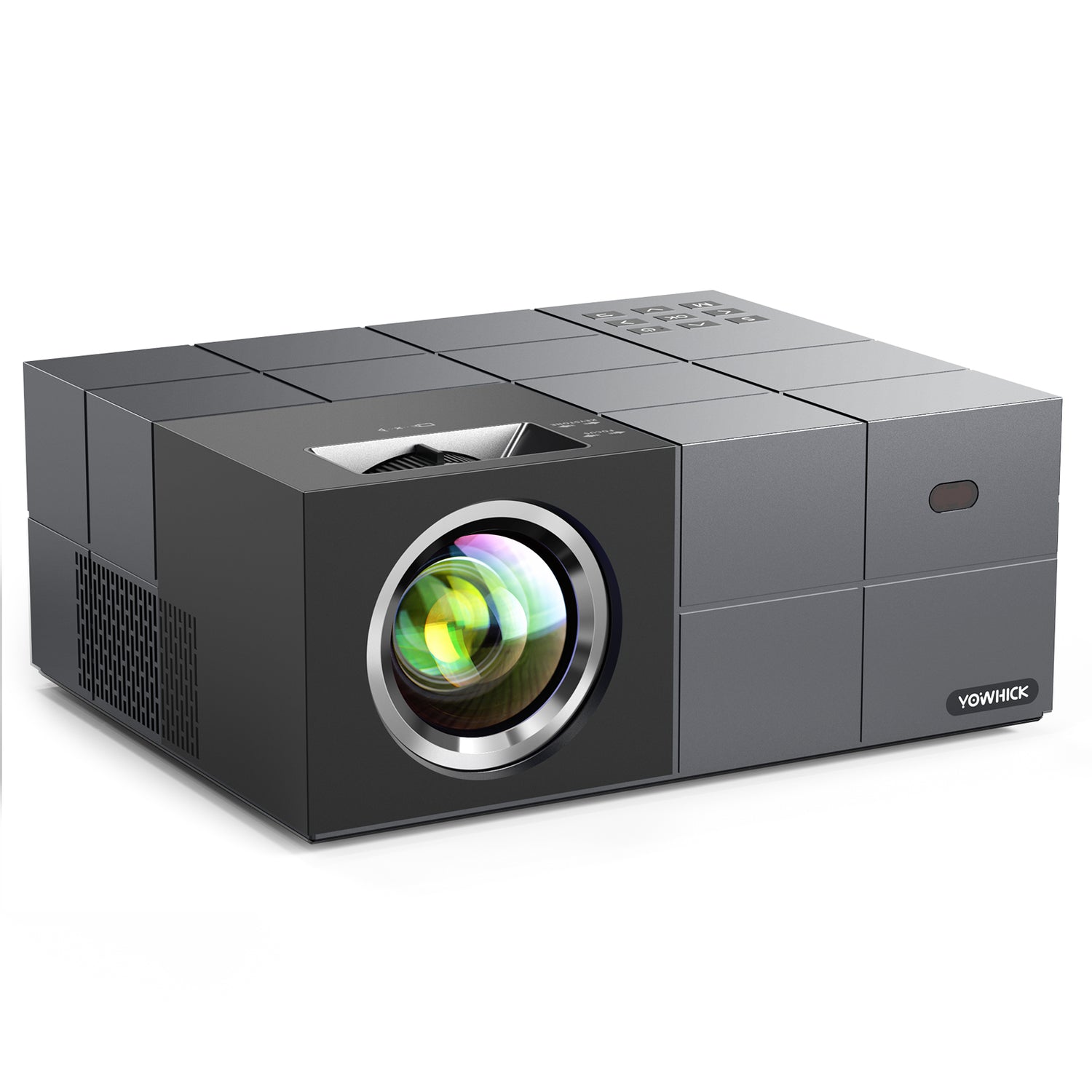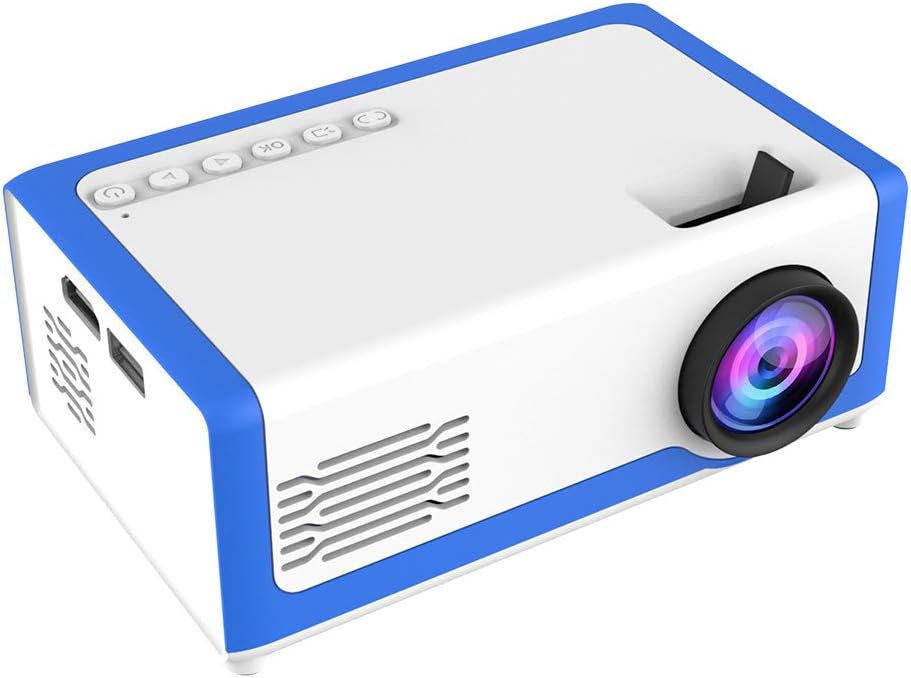Unveiling the Definition: What Does A 1080p Supported Projector Mean?
Introduction
Contrary to what many believe, not all projectors are created equal. Design, power, and above all, resolution can greatly vary from model to model. This post sheds light on one of the key technical terms associated with projectors: 1080p. So if you've been wondering what a '1080p supported projector' means, read on and unlock your understanding.

What is a 1080p Supported Projector?
When discussing projectors, one phrase you likely come across is '1080p supported projector'. Unraveling this technological term, a 1080p supported projector has the potential to display visuals in high definition with a resolution of 1920 x 1080 pixels. With '1080' referencing the count of individual pixels or dots organized vertically on the screen, and 'p' symbolizing 'progressive scan', this term defines the process through which images are drawn on the screen.
To break it down, here's what it implies:
- High-resolution visuals: Enabled by the 1920 x 1080 pixels, this projector can exhibit detailed and sharp images proficiently.
- Comprehensive progressive scan: Signified by the 'p', this systematic scan provides a seamless motion experience.
- Superior image quality: The combination of a high number of pixels and the progressive scan results in the display of images with profound clarity and preciseness.
Simply put, having a 1080p supported projector assures you of a premium, seamless viewing experience devoid of distortions or pixelation, offering you visual treat and entertainment like none other.
Deciphering the Concept: What Does 1080p Mean in The Context of Projectors?
When it comes to projectors, '1080p' plays a significant role in revealing the extent of quality in terms of sharpness, clarity, and overall image perfection.
In essence, a 1080p supported projector represents the apex of resolution capabilities, capable of supporting high-resolution images and video playback without the need for downsizing. This ensures viewers witness:
- Crispier details
- More lifelike visuals
- Enhanced image consistency
- Smooth transitions
Why is this important, you ask? Let's delve into the nitty-gritty:
• Sharpness: A 1080p projector can produce more distinct and defined images. So, every detail is crystal clear, bringing a new depth to the picture quality.
• Progressive Scan: The 'p' in 1080p refers to 'progressive scan'. This tech-speak means the projector refreshes all the lines of each frame of video in sequence, so nothing goes missing. This results in a smoother, more seamless viewing experience - perfect for fast-paced action sequences!
• Pixel Count: The term '1080p' reveals a count of 1920 x 1080 pixels. This high pixel count translates into richer image quality which is crisp and largely free from distortion.
• Visual Quality: When compared to sub-1080p projectors, a 1080p projector provides improved image quality—even on larger screens. This means your viewing experience won't degrade when screened larger.
Take a moment right now to imagine such a viewing experience. A 1080p projector isn't just a piece of tech—it's a whole new viewing experience that brings your content, be it a meeting presentation or a weekend movie, to life.
Why is 1080p Highly Regarded in The World of Projectors?
The revered status that 1080p enjoys in the world of projectors is attributed to its distinct advantages for both home and professional use.
* Blu-ray Content Compatibility: Blu-ray discs and most HD broadcasts are designed for a resolution of 1080p. A 1080p projector can, therefore, offer the optimal image and video quality that these formats have to offer.
* Detailed and Clear Visualization: The high resolution of 1080p projectors renders detailed pictures with minimal pixel visibility, leading to clear, vibrant, and lifelike images.
* Performance on Larger Screens: When you project an image onto a larger screen with a 1080p projector, there's no significant quality loss or pixelation - this isn't typically the case with lower-resolutions projectors.
* Long-Term Compatibility: As media and broadcasting trends continue to move towards high-definition, investing in a 1080p projector ensures your equipment remains future-proof.
* Impressive Stats: A 1080p resolution means 2,073,600 individual pixels are at work to create the image. This is more than double the pixel count of the standard 720p HD resolution, offering superior image quality.
In a nutshell, whether it's a dramatic movie night or a data-driven business presentation, 1080p projectors guarantee to provide excellent visual performance. Their compatibility and outstanding delivery of high-resolution content offer an unrivaled user experience. Although they may come with a higher price tag, the investment is worth considering when equating it with the benefits offered.

Comparing the Capabilities: What Sets A 1080p Supported Projector Apart From Lower Resolution Projectors?
When it comes to comparing a 1080p supported projector and projectors with lower resolutions, distinct differences rest in terms of image quality and performance.
Detailing the differences:
1. Image Quality: 1080p projectors offer exceptional sharpness, higher contrast ratios, and a more vibrant color palette than their 720p or SVGA counterparts, making them a top choice for individuals who prioritize visual quality.
2. Performance on Larger Screens: Lower resolution projectors may produce decent images on small screens, but when switched to larger screens, the pixelated images become noticeable. On the other hand, a 1080p projector excels even on larger screen sizes, maintaining high-quality images without significant distortion.
3. Compatibility: As an upgrade from lower resolutions, 1080p projectors offer better compatibility with modern entertainment and media formats, acting as a safeguard for future developments.
Factoring in these distinct attributes, we can clearly see how a 1080p supported projector stands a cut above the lower resolution ones:
- Unsurpassed Image Quality: 1080p projectors ensure an impressive reproduction of finer details with superior sharpness and richness.
- Performance on Larger Screens: These projectors deliver consistent quality across various screen sizes.
- Future-Proof Compatibility: Staying updated with media trends, 1080p projectors support modern high-definition content more efficiently.
In essence, it's clear why investing in a 1080p projector could be a wise decision for those seeking superior image quality and future-proof technology.
How to Choose A 1080p Supported Projector? Essential Buying Points
Purchasing a 1080p supported projector isn't solely about focusing on resolution. It requires a careful examination of various other factors to ensure you're investing in a product that fully meets your requirements. The following points can act as an effective buying guide:
- Lumens Rating: The brightness of a projector has a significant impact on image quality. A higher lumens rating indicates a brighter image, making it one of the key things to consider.
- Contrast Ratio: This ratio highlights the difference between the darkest and brightest parts of an image. A higher contrast ratio ensures more vivid and dynamic visuals.
- Connectivity: It's crucial to check the device's connectivity options to ensure it integrates with your existing equipment. Look for multiple input options such as HDMI, USB, and VGA.
- Throw Ratio: This determines the size of the image the projector can display at a particular distance. Depending on your space, choose a projector that can accomplish the desired image size from the desired installation distance.
- Portability and Setup: If you'll be moving the projector around frequently, a portable and easy-to-set-up model will make life simpler.
- Price: 1080p projectors come in various price ranges. Try to find a balance between your budget and your requirement for quality and functionality.
Interesting Fact: According to ProjectorCentral, for home theater projectors, 2500+ lumens is considered appropriate for rooms with ambient light, while 1000 – 1200 lumens would be sufficient for a room with total darkness.
Remember, the best projector for you is one that offers high quality visuals along with the features that cater to your specific needs. By looking out for these essential buying points, you can ensure that you make a wise purchase.
Conclusion
To sum it up, a 1080p supported projector signifies an assurance of high-quality performance and finer details. Investing in one could significantly improve your viewing experience, whether for presentations or home entertainment. Although it might entail a higher upfront cost, the benefits offered make it a valuable choice in the long run.
Related FAQs about what does 1080p supported projector mean
Is there a significant difference between a 1080p supported projector and ones with lesser resolution?
Yes, the difference is considerable. A 1080p projector offers superior image quality, detailed visuals, and better performance on larger screens. It also ensures optimal compatibility with modern high-definition media formats, whereas lower resolution projectors might struggle with the same.
What are some examples of the benefits of a 1080p supported projector for an average user?
A 1080p supported projector elevates viewing experiences with its high resolution, offering sharper, clearer images and videos. Whether used for presentations or home entertainment, it provides a wide range of rich colors and smooth transitions, which substantially enhances overall visual experiences.
Are 1080p supported projectors generally more expensive and is it worth the increased cost?
1080p projectors can be more expensive due to their advanced resolution and related features. However, the superior picture quality and future-compatibility constitutes value for your money in the long run, making the investment worthwhile.


